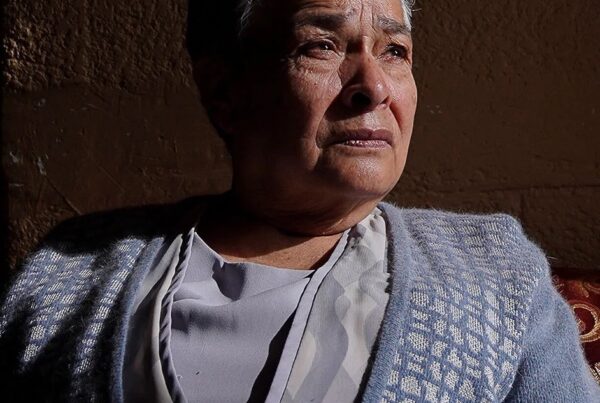Because Homelessness is such an important and contentious issue at the moment, both politically and socially, children of primary school age cannot be immune from the discussion. Creating awareness amongst children about the issue of homelessness fulfils both the UN’s Sustainable Development Goal 4 for Education as well as the aims of the Social, Personal and Health Education (SPHE) curriculum of the Irish Primary School.
Picture Books are often thought of as the domain of infants and younger pupils. They are sometimes associated with the bedtime story or a parent reading to a young child on their lap. However, picture books are an excellent way of introducing pupils of all ages to big ideas, social issues and critical engagement and the notion of making meaning together through thinking and discussion about the content of the book.
Critical Thinking and Book Talk (CT and BT)1is a teaching strategy used in schools to encourage pupils to become critical thinkers through engagement and discussion about the picture book. It was through using this methodology that pupils in my class last year began to engage more with the theme of homelessness.
Together, as a class, we read the picture book “Way Home” by Libby Hathorn as a stimulus for talk and discussion. Whilst initially pupils were reluctant to discuss the central issue in the book, they gradually began to engage more and talked about the protagonist in the story, comparing his life to their own comfortable home situations. Through this talk and discussion, the pupils were better able to recognise the issue of homelessness facing the boy in the book and make judgements on the central issues portrayed in the book.
Pupils also began individually reading a selection of picture books (See List below) on the theme of homelessness and posted Book Reports on them on our class blog. The following is an example of how the theme of one of the books affected one of the pupils:
“This picture book (“The Cardboard Shack – Beneath the Bridge” by Tim Huff) has been a very eye-opening experience. It really had so many meanings behind every word. I loved every second of reading this book. Even though it was very short, I feel like this has been the best book I have read. The truth is, it isn’t a story. It is real life. Homelessness is happening everywhere in the world. Quite frankly, we take most things for granted. See, I am sitting in my desk chair right now, typing this on my computer, in my cosy home with the fire lit, with my PJ’s on and eating cereal. That’s normal right? But for an unfortunate amount of people, that sounds like heaven. When I’m lying in my bed at night, a girl my age could be out on the streets, hoping to survive another day. Some of us worry about which new shoes or phones we have, while some can’t even afford a slice of bread”.
-Leah
Educating our pupils about the issue of homelessness is central to fulfilling the UN’s Sustainable Development Goal 4. It also fulfils certain aspects of the Social, Personal and Health Education (SPHE) area of the Irish Primary School Curriculum.
Beginning a discussion in the classroom on the issue of homelessness through the use of picture books gives pupils the opportunity to engage in a meaningful and tangible way with such a current and topical issue and, as demonstrated, gives them a voice in the discussion and debate.
This is a version of an article written for UNANIMA International: “Hidden Faces of Homelessness: International Research on Families”, New York, USA: UNANIMA International, 2020.
Picture Books on the Theme of Homelessness
The following is a list of Picture Books on the Theme of Homelessness that my pupils have been reading and responding to:
- “Way Home” by Libby Hathorn and Gregory Rogers tells the story of a young boy called Shane who fends for himself, living on the dark night streets. He strikes up an unlikely friendship with a cat whom he decides to take care of and bring him “home”. But where is this “Home”?
- “Fly Away Home” by Eve Bunting tells the story of a young boy and his father who are homeless and living in an airport terminal building. They try to blend in and not get noticed so that they are not ejected from the building. “Sometimes I just want to cry”, says the boy. There’s a lovely metaphor in the book about a bird who gets trapped in the terminal building. The boy sees the bird escape and thinks, “It took a while, but a door opened”.
- “The Journey” by Francesca Sanna tells the story of a young family forced to flee their home country because of war which has also taken the life of the father. They face dangers all along as they attempt to cross a border to reach a “safe place”. After a perilous journey on an overcrowded ferry, they travel by train to their destination. One of the children sees birds and remarks, “They are migrating just like us. And their journey is very long too, but they don’t have to cross any borders”.
- “The Cardboard Shack Beneath the Bridge” by Tim Huff tells the story of why someone may be living in a “home” underneath a bridge. Told in verse form, the story urges empathy and compassion for those who might be living in such circumstances. What’s different about this book is that it includes a discussion guide for each page in the book for parents/teachers to help children understand the issue of homelessness.
- “A Shelter in Our Car” by Monica Gunning tells the story of a young girl and her mother who live in temporary accommodation – in their run-down car. They eat and sleep in the car and the mother even reads a bedtime story to her daughter in the car. They constantly have to find a safe space to park the car at night. In the morning they find a public restroom to wash and change to get ready for school. Will they ever be able to afford an apartment again?
- “The Can Man” by Laura E. Williams is about a young boy called Tim whose birthday is coming soon and he has his eye on a new skateboard which his family cannot afford. When he sees Mr. Peters, the homeless man, collecting tin cans to exchange for cash at the redemption centre, he gets an idea. He starts to collect cans too to save for his skateboard. But Mr. Peters suddenly notices that there aren’t many cans around for him to collect to buy his winter coat. What will Tim do?
- “Uncle Willie and the Soup Kitchen” by DyAnne DiSalvo Ryan tells the story of a young boy who discovers that his Uncle Willie works at the local soup kitchen. On a day off from school, the boy accompanies his uncle to the soup kitchen to help out for the day. He discovers that you only have to be hungry to attend the soup kitchen and that they fed 121 people that day.
- “How Will Santa Find Us” by Shane O’ Brien and Stephen Rodgers tells the story of a little girl and her younger brother who lose their home in the week before Christmas. The story follows their family as they are moved from place to place in an effort to find somewhere to stay. The children’s parents try to distract them from their predicament by trying to make each move to a different type of temporary accommodation into an exciting and imaginative adventure. However, like all children at Christmas time, the children’s main concern is how will Santa find them.
Damien M. Quinn,
6th Class Teacher,
Ransboro National School, Sligo,
Founder, Seomra Ranga.com
-
Developing Children’s Critical Thinking Through Picturebooks” by Mary Roche, Taylor and Francis Ltd., 2014






